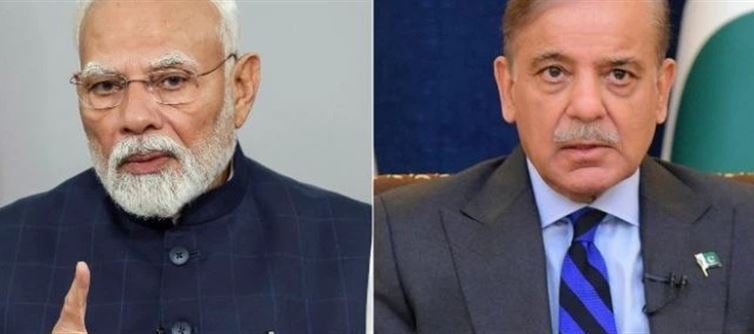
Pakistan's already precarious economy is already suffering as a result of war preparations and the punitive diplomatic actions taken by the indian government, led by prime minister Narendra Modi, in the face of the imminent threat of a full-scale India-Pakistan war or even a targeted military strike by india to exact revenge for the savage pahalgam terror attack that occurred last month.
The sunday Guardian reported that since april 22 (the pahalgam attack), Pakistan's military forces (Army, Navy, and air Force) have been spending an additional $1.5 to $3.2 million every day. This adds up to $45 to $96 million a month, which is a significant amount for a nation whose economy is in ruins and where high inflation is pushing millions of people into poverty and starvation.
Pakistan economy in freefall after pahalgam terror attack
The report claims that as tensions with india threaten to escalate into a major confrontation, the pakistan Army has begun mobilizing troops in Pakistan-occupied kashmir (PoK), sending over 18,000 soldiers from balochistan to the area.
Since the pahalgam terror assault on april 22, investors have lost billions of dollars on the pakistan Stock Exchange (PSX) due to the fear of a full-scale India-Pakistan war. According to official data, Pakistani companies' market capitalization has plummeted by about $4 billion, which is significant given that the nation lacks the massive international corporations found in India.
In addition, the Pakistani rupee, which was already in freefall, has dropped 30% from 2023, and the KSE-100 index dropped 2500 points to 114,740.29 on april 24 and 1204 points on april 23. The IMF has reduced Pakistan's GDP growth prediction to 3.2% in 2025 due to the worsening scenario with India.
How an India-Pakistan war will destroy Pakistan's economy?
Beyond war threats and political posturing, it's common knowledge that war costs a lot of money, which pakistan lacks. Let's examine the expenditures made by Pakistan's military and how a war would devastate the country's economy.
In addition to the high cost of fuel for its Type 054A/P frigates and Hangar-class submarines, the pakistan Navy spends between $100,000 and $500,000 on patrolling in Karachi and Gwadar Port.
According to estimates, the pakistan air Force spends between $150,000 and $400,000 every day on combat air patrols utilizing its JF-17 and F-16 fighter jets, which cost $10,000 to $15,000 every flight hour for 10 to 20 missions.
Experts predict that Pakistan's surface-to-surface ballistic missile test, scheduled for april 24–25, will cost between $100,000 and $500,000.
The sunday Guardian reported that since april 22 (the pahalgam attack), Pakistan's military forces (Army, Navy, and air Force) have been spending an additional $1.5 to $3.2 million every day. This adds up to $45 to $96 million a month, which is a significant amount for a nation whose economy is in ruins and where high inflation is pushing millions of people into poverty and starvation.
Pakistan economy in freefall after pahalgam terror attack
The report claims that as tensions with india threaten to escalate into a major confrontation, the pakistan Army has begun mobilizing troops in Pakistan-occupied kashmir (PoK), sending over 18,000 soldiers from balochistan to the area.
Since the pahalgam terror assault on april 22, investors have lost billions of dollars on the pakistan Stock Exchange (PSX) due to the fear of a full-scale India-Pakistan war. According to official data, Pakistani companies' market capitalization has plummeted by about $4 billion, which is significant given that the nation lacks the massive international corporations found in India.
In addition, the Pakistani rupee, which was already in freefall, has dropped 30% from 2023, and the KSE-100 index dropped 2500 points to 114,740.29 on april 24 and 1204 points on april 23. The IMF has reduced Pakistan's GDP growth prediction to 3.2% in 2025 due to the worsening scenario with India.
How an India-Pakistan war will destroy Pakistan's economy?
Beyond war threats and political posturing, it's common knowledge that war costs a lot of money, which pakistan lacks. Let's examine the expenditures made by Pakistan's military and how a war would devastate the country's economy.
In addition to the high cost of fuel for its Type 054A/P frigates and Hangar-class submarines, the pakistan Navy spends between $100,000 and $500,000 on patrolling in Karachi and Gwadar Port.
According to estimates, the pakistan air Force spends between $150,000 and $400,000 every day on combat air patrols utilizing its JF-17 and F-16 fighter jets, which cost $10,000 to $15,000 every flight hour for 10 to 20 missions.
Experts predict that Pakistan's surface-to-surface ballistic missile test, scheduled for april 24–25, will cost between $100,000 and $500,000.




 click and follow Indiaherald WhatsApp channel
click and follow Indiaherald WhatsApp channel